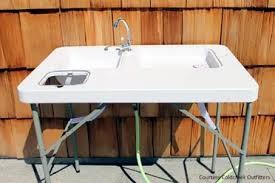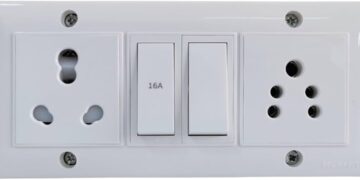Portable hand washing sinks, like any other appliance or piece of equipment, require routine maintenance. Maintenance, together with correct use, is an equipment owner’s insurance policy against early—and, in most cases, avoidable—breakdowns.
In a fast-paced and dynamic environment, a broken sink is not only expensive to fix, but it also disrupts operations that require regular hand washing and hygiene. Knowing how to keep your portable sink in good working order can make a big difference in its longevity, productivity, and even hand hygiene. To find out more about wastewater management be sure to check out Cleanawate
Do you, on the other hand, know how to care for your portable sink and what that entails? In a nutshell, you should concentrate on three essential components: hoses, tanks, and the hand washing basin. For best performance and safety, these three pieces must cleaned, examined, and maintained on a regular basis.
This simple guide will show you how to care for your portable sink:
SUPPLIES FOR CLEANING
Portable sinks require regular cleaning after each use, as well as frequent inspections and maintenance to ensure optimal performance. You’ll need the necessary sanitary supplies and tools to finish the job.
For routine cleaning before, during, and after service or operating hours, have disinfectant, chlorine, bleach, pumping wands, towels, and brushes on hand. Each hand washing station should have its own towels and brushes, which should be disinfected completely after each usage. This eliminates cross-contamination, debris accumulation, and harmful mould growth.
HYDRATE THE HOSES
Different hoses bring water to the tank and the hand washing basin in many portable sinks. Make sure that each of these functions has its own hose, and that the ends are sealed to prevent contamination and assure safety. Regularly clean each hose with a 10 percent household bleach and water solution to remove any build-up and ensure a clear water flow.
CLEAN THE HAND WASHING BASIN
A portable sink’s basin is where hand washing takes place, capturing soap suds and detritus. It creates a breeding ground for hazardous germs, sediment build-up, and contamination when regular cleaning and maintenance neglected.
Make it a habit to properly clean the sink after each usage and at the end of a shift or operating hours. To neutralise bacteria, use roughly 11 drops of home liquid chlorine bleach per gallon of water. Apart from the basin, pay close attention to the faucets and dispensers to verify that the complete unit is clean and safe to use.
REMOVE THE WASTEWATER FROM THE TANK
The wastewater tank can quickly fill up between the service rush and frequent washing. Check the tank on a regular basis to see when it’s full and ready to drain the wastewater. Inspect the tank for any evidence of mould, algae, or sediment build-up that may be lining the tanks once the compartment is empty. Before resuming use of the portable sink, clean the tanks and remove any build-up.
CHECK FOR DAMAGE SIGNS
Continuously operating a piece of equipment without regularly inspecting its condition is the quickest method to destroy it. To keep a portable sink in good working order, examine it after each use and look for signs of wear and tear.
Regular inspections help you to see damage early on, such as cracks in tanks and hoses, as well as a reduction in water flow. Early detection and repair keeps debris out, reduces the risk of contamination, and avoids a premature breakdown.
REGULAR MAINTENANCE IS REQUIRED.
After each service, portable sinks should be cleaned and examined, but regular maintenance necessitates a schedule: daily cleaning, weekly inspection, and monthly preventative maintenance servicing. Here’s what you need to do to keep your portable sink in top shape:
DAILY CLEANING
Remember the fundamentals of portable sink cleaning. Using non-abrasive cleansers and a soft cloth, rinse and wipe off the sink basin, counter, and faucet, then dry all surfaces. Remove any debris from strainers to prevent build-up and ensure proper water flow.
To avoid overflow and sediment build-up, empty and inspect the wastewater tank. To avoid the unit running on an empty tank, which can damage the pump, make sure the freshwater tank is full throughout the service. Turn off and unplug the portable sink at the end of each service. To reduce water pressure and extend the life of the pump, leave the faucet open. Move the faucets to the closed position before resuming service, then plug the unit back in.
WEEKLY INSPECTION
Clean the tanks, aerator, filter, tank connector, and cabinet once a week. To avoid contamination, clean both the fresh and wastewater tanks to remove dirt and bacteria. To restore optimal water flow and prevent contamination, remove the sink aerator—the element at the end of the faucet that adds air to restrict water flow—and the filter.
Make it a weekly routine to check the tank connectors. Examine the o-rings and tubing for any cracks or wear and tear, and schedule a parts replacement as soon as possible to avoid further damage and service interruptions. Clean the cabinet’s outside with a material-safe cleaner to keep its finish in good shape.
MONTHLY PREVENTATIVE
Do you see symptoms of wear and tear or a drop in performance? Leave the monthly preventative to the professionals rather than waiting until it’s too late or attempting a DIY fix. To guarantee optimal function and longevity, schedule regular preventative maintenance with your portable sink manufacturer or a professional technician.
Check the electrical outlet and connections as part of your routine maintenance to replace damaged cords and avoid fire hazards. To maintain optimal hand washing and sanitation, it’s also vital to clean the internal parts and pump system with a safe, toxic-free solution.
These maintenance services, as well as troubleshooting and replacing broken or worn out parts, can be performed by a professional technician to get your portable sink back to working order.
For more related articles, please visit: https://visitpick.com/
Check also- Tips for a great birthday party without wasting money















